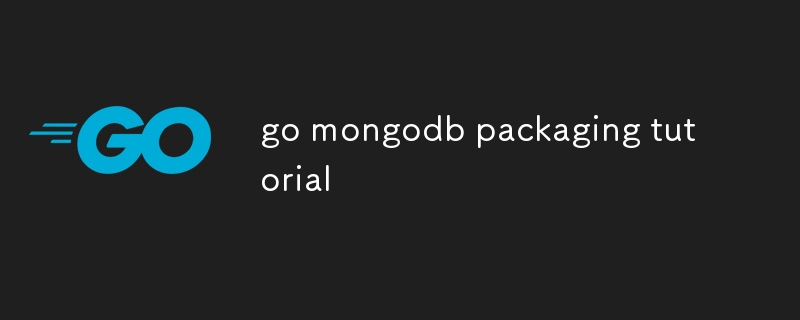go mongodb パッケージ化チュートリアル
- DDDオリジナル
- 2024-08-15 12:19:19774ブラウズ
This article provides guidance on encapsulating MongoDB operations in Go using an ORM library like mgo. It highlights the benefits of using ORM, such as a simplified API, reduced boilerplate code, and data validation. The article also includes an exa

How to encapsulate MongoDB operations in Go?
To encapsulate MongoDB operations in Go, you can use an Object-Relational Mapping (ORM) library like mgo. ORM libraries provide a higher-level abstraction over the MongoDB API, making it easier to work with MongoDB databases in Go.
What are the benefits of using an ORM like Mgo for MongoDB in Go?
Using an ORM like mgo for MongoDB in Go offers several benefits, including:
- Simplified API: ORMs provide a more user-friendly API for interacting with MongoDB, making it easier to perform common operations like querying, inserting, and updating data.
- Reduced Boilerplate Code: ORMs automatically generate much of the boilerplate code that would otherwise be required to work with MongoDB, reducing development time.
- Data Validation: ORMs can be used to enforce data validation rules, ensuring that data stored in the database is valid.
Can you provide an example of how to use a Go library to connect to and query a MongoDB database?
Here is an example of how to use the mgo library to connect to and query a MongoDB database:
<code class="go">package main
import (
"context"
"fmt"
"github.com/globalsign/mgo"
"github.com/globalsign/mgo/bson"
)
func main() {
// Create a new MongoDB session.
session, err := mgo.Dial("mongodb://localhost:27017")
if err != nil {
panic(err)
}
defer session.Close()
// Get a collection from the session.
collection := session.DB("test").C("users")
// Query the collection.
query := bson.M{"name": "John"}
results, err := collection.Find(query).Limit(100).All(nil)
if err != nil {
panic(err)
}
// Print the results.
for _, result := range results {
fmt.Println(result)
}
}</code>以上がgo mongodb パッケージ化チュートリアルの詳細内容です。詳細については、PHP 中国語 Web サイトの他の関連記事を参照してください。
声明:
この記事の内容はネチズンが自主的に寄稿したものであり、著作権は原著者に帰属します。このサイトは、それに相当する法的責任を負いません。盗作または侵害の疑いのあるコンテンツを見つけた場合は、admin@php.cn までご連絡ください。
前の記事:go mongodbの使い方次の記事:go mongodbの使い方

